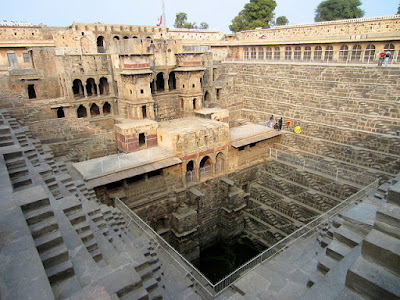#ashokasays Did you know 209:
Incredible Things Indian Navy Marine Commandos Do In Training That Deserve Our Respect
In my 41st post I had written about MARCOS. Indian armed forces are probably the only thoroughly professional government agency in the country. And among them, the marine commandos are the elite – known for their lethality and uber professionalism, they are probably one of the elite forces in the whole world.
And they didn’t become the best of the best with normal training.
Their training is harder than Army paratroopers or any western forces, because a MARCOS cadet went to the US Navy SEALS training and topped the course which has an attrition rate of 90%.
How hard is the training to become MARCOS? Take a look –
1. All personnel who want to try for MARCOS are qualified for a HAHO/HALO jump
HALO (High Altitude Low Opening) – Jump from 11 kilometers above the earth, but opening of the parachute is close to the ground.
HAHO (High Altitude High opening) – Jump from 8 kilometers, but opening of the parachute is 10-15 seconds after the jump.
Jut FYI – At 8 kilometers of height the temperature is a freezing -40 degrees Celsius.
2. During everyday training, the day begins with a 20-kilometer run
This is their morning wake-up routine.
3. 20-kilometer night treks with 60-kilo load
This is after a day that started with a 20 kilometer run in the morning.
4. All training is conducted with live ammunition.
If there is friendly fire, your friend is dead. They teach the commandoes to be extremely careful and truly respect the weapons they are carrying.
5. Once in a week they are supposed to walk 120 kilometers with a 60-kilo load on their backs
And the 120 kilometers are expected to be covered in a specified duration – that is, there is a time limit to it. If you fail – you get out.
There is hell’s week that simulates the Navy SEALS hell’s week where –
6. There is a week of continuous training with over 20 hours in a day spent in continuous physical exertion
It is like being in the gym for 20 hours.
7. They get less than 4 hours of sleep in the course of the week, and the daily physical tasks happen every day
That is just over half an hour of sleep in a day. That’s all.
8. Then, in the end, they are asked to run trough thigh-high thick mud with a 25-kilo backpack
If you didn’t know, running through mud is extremely difficult and will exhaust your energy reserves before you know it. Add to that a 25-kilo backpack and it is genuine hell.
9. And then comes a 2.5-kilometer obstacle course that even good soldiers would fail.
This is after the mud run.
10. And after all this, they are supposed to shoot a target with a buddy soldier right beside it from 25 meters away
When the soldier is utterly exhausted, even to lift a rifle, he is supposed to shoot a target that has his buddy soldier standing right next to it.
If the soldier misses – he fails.
If the soldier doesn’t shoot – he fails.
11. More than 90% of the applicants drop out because of the rigorous course they are put through.
And no, the training is not over. This was just to get into the training to become a MARCOS.
12. Advanced training lasts for 2 years and more.
After the initial weeding, the people who stay over are given advanced and specialized training.
13. They are put through high altitude warfare(fighting in the cold), jungle warfare (fighting in the jungles), mountain warfare (fighting in the mountains)
They are not marine commandos in the true sense. They can fight anywhere on the planet.
14. They are taught to fire their guns lying down, in full sprint and a full backward sprint. Also, they are taught to shoot looking in a mirror.
This is to make them extremely proficient in sharp shooting.
15. They are expected to have a reaction time of 0.27 seconds.
They are expected to be at their peak, and their training makes them like that.
16. They have proficiency in foreign languages like Arabic, Mandarin so that they can gather foreign intelligence.
They are the most well-trained force in the country and can deal with everything that is thrown at them. This is why they are so secretive. Nobody knows their identities and they look like regular people, as the regular armed forces haircut and uniform is not compulsory for them.
They have helped India out in every major national threat we faced – from the Kargil war to the Mumbai attacks and have always proved their mettle by the success they show.
Unnamed and uncredited, they are the silent protectors of our country.
Do you think now sitting here we should crib about the training we get in the AC cabins?
Don't you think movies which are made criticizing the Army deserve to be thrown out of this country?
Don't you think those who talk about intolerance should be made to go through these kind of training and make them understand how they are being protected by these great Army men?
INCREDIBLE BHARATHIYA ARMY.... SALUTE THEM AND OWE THEM EVERYTHING WE COUNTRYMEN HAVE ACHIEVED.





















































